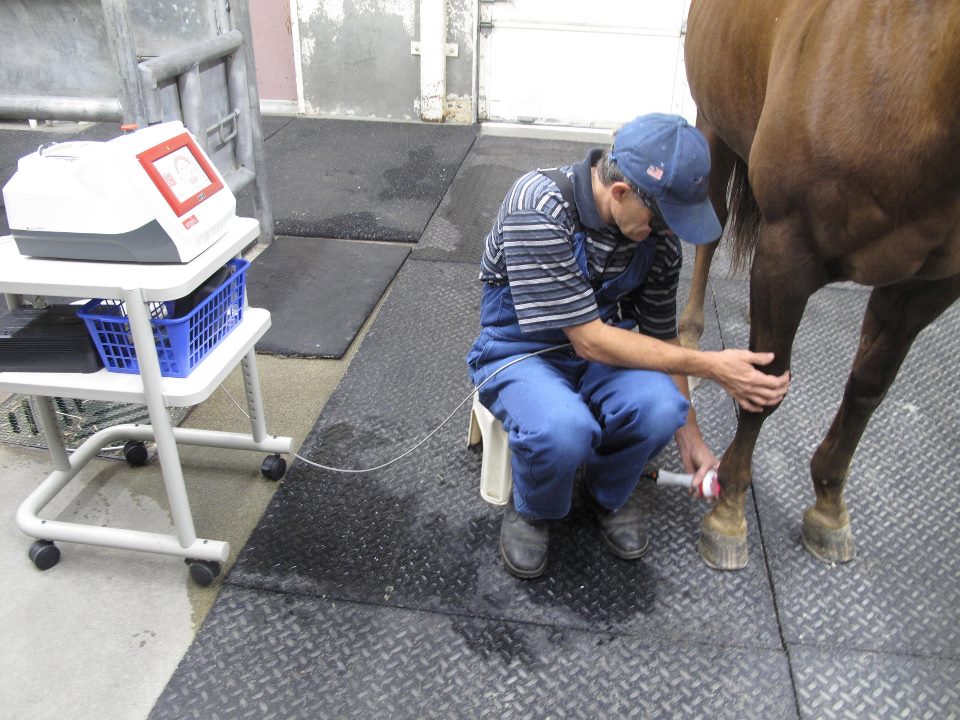Everything You Required to Find Out About Equine Therapy for Mental Health
Everything You Required to Find Out About Equine Therapy for Mental Health
Blog Article
How Laser Treatment in Horse Therapy Is Changing Veterinary Treatment for Equines
Laser therapy has actually emerged as a transformative method in equine veterinary care, supplying a non-invasive option that speeds up healing and boosts general health. The portability and flexibility of laser treatment tools better emphasize their expanding indispensability among veterinarians.

Understanding Laser Treatment
Recognizing laser therapy is essential for appreciating its function in equine therapy. Laser treatment, additionally called photobiomodulation, includes the application of particular wavelengths of light to tissues, which can cause various biological results. This healing method takes advantage of the power of light energy to penetrate the skin and underlying tissues, boosting cellular procedures and improving cells repair work.
The innovation behind laser therapy is based in the principle of photochemistry, where photons are absorbed by chromophores within cells, leading to raised ATP manufacturing and modulation of responsive oxygen types. This, consequently, advertises mobile spreading, reduces inflammation, and increases healing. Vet professionals use various kinds of lasers, including low-level lasers (LLLT) and high-power Class IV lasers, depending on the certain therapeutic objectives and the nature of the equine problem being treated.
Different laser wavelengths and power setups are meticulously picked to target various cells depths and accomplish desired medical results. Safety and security methods are critical, as improper usage can lead to thermal damage or suboptimal restorative results. Therefore, a detailed understanding of laser therapy's devices and applications is critical for its effective implementation in equine veterinary practice.
Advantages for Equine Wellness
The myriad benefits of laser therapy for equine health and wellness include enhanced healing, pain decrease, and enhanced flexibility. This sophisticated therapy method leverages specific wavelengths of light to permeate tissues, promoting mobile function and advertising rapid tissue repair service. The non-invasive nature of laser therapy makes sure marginal anxiety and discomfort for the steed, promoting a smoother recovery process.

By decreasing inflammation and discomfort, and improving cells fixing, laser therapy aids in recovering joint feature and muscle mass adaptability. Hence, laser treatment stands as a transformative device in modern-day horse veterinary treatment.
Typical Conditions Treated
Laser therapy has emerged as a functional treatment alternative for a selection of common equine conditions. Amongst these, musculoskeletal injuries are especially responsive to laser therapy. Soft cells injuries, such as tendonitis and tendon pressures, take advantage of the anti-inflammatory and analgesic impacts of laser therapies, which speed up healing and reduce discomfort. In addition, laser treatment works for problems like osteo arthritis, where it helps alleviate joint inflammation and promote tissue repair work.
Wound management is an additional area where laser treatment has shown substantial pledge. Chronic wounds or slow-healing abscess can be particularly tough in steeds, but laser treatment boosts cellular regeneration and website here enhances blood circulation, hence quickening the healing process. Moreover, laser treatments have actually been successfully used in handling hoof problems such as laminitis and abscesses, minimizing discomfort and promoting faster healing.
Equine professional athletes often experience from performance-related problems like muscle soreness and stress fractures. Laser treatment aids in decreasing muscle mass fatigue and expedites the recuperation of micro-injuries, therefore guaranteeing that steeds go back to peak efficiency quicker. By resolving these diverse problems, laser therapy is changing the landscape of vet care, giving a non-invasive, reliable choice to conventional treatments.
Modern Technology Behind Laser Therapy

Laser gadgets utilized in vet medicine commonly make use of low-level laser therapy (LLLT) or cool laser therapy. Unlike high-powered surgical lasers, these tools run at lower energy levels, optimizing restorative benefits while lessening thermal damages. The power from the laser light stimulates adenosine triphosphate (ATP) manufacturing, boosts mobile metabolic process, and speeds up tissue fixing procedures.
Modern laser treatment devices for equine therapy is designed with flexible settings to cater to the certain needs of various tissues and conditions. In addition, improvements in my link laser modern technology have led to the development of mobile, handheld tools, making it much easier for vets to supply treatment in a variety of setups, from facilities to stables.
Success Stories and Study
Showcasing the tangible benefits of laser treatment, many success tales and study illuminate its transformative effect on equine health. One such instance involves a purebred racehorse suffering from chronic tendonitis. Traditional therapies yielded minimal enhancement, however after incorporating laser treatment into the routine, the equine displayed considerable decreases in swelling and discomfort within weeks, eventually returning to affordable racing.
An additional compelling example features a dressage steed diagnosed with serious back pain, restricting its performance. A vet group employed low-level laser therapy (LLLT) to target the inflamed areas, leading to significant improvement in versatility and a notable decline in discomfort. Over numerous sessions, the steed reclaimed its peak kind, showcasing the efficacy of laser treatment in dealing with musculoskeletal problems.
In addition, a research conducted at a leading equine facility checked out 50 steeds with numerous soft cells injuries treated with laser therapy. The results were striking: 85% of the horses demonstrated accelerated healing times and enhanced movement. These instances highlight the flexibility and efficiency of laser treatment in equine medication, providing a non-invasive, scientifically-backed method to boosting recovery and performance in horses.
Final Thought
Laser therapy is revolutionizing equine vet care by Check This Out supplying a non-invasive therapy that increases recovery, decreases inflammation, and reduces discomfort. With its effectiveness in dealing with a variety of conditions, from musculoskeletal injuries to chronic disorders like osteoarthritis, this technology dramatically boosts equine wellness and wheelchair. The transportability and versatility of laser therapy additionally emphasize its transformative effect on vet practices, strengthening its role as a vital device in modern equine health care.
Report this page